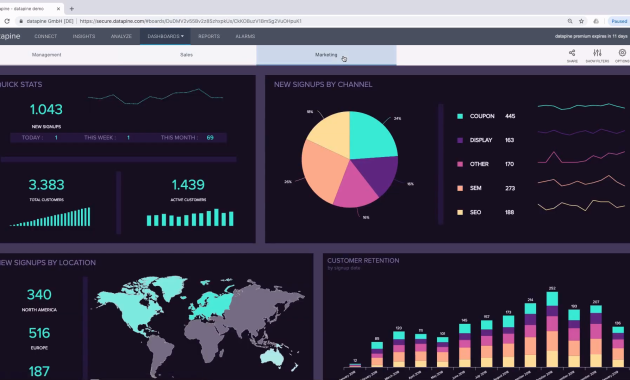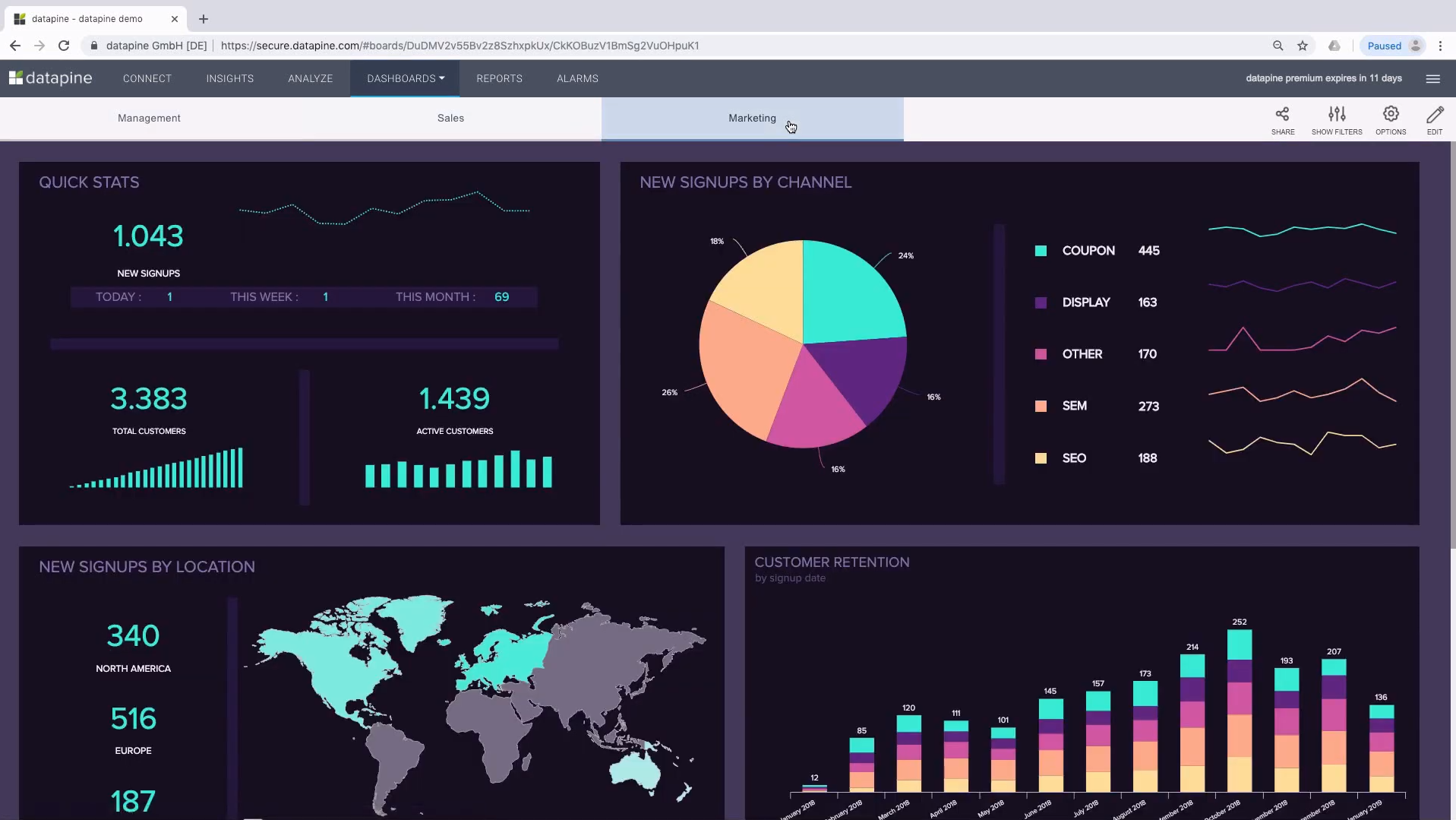
Know What Matters in Business Intelligence Software: A Critical Guide for 2024
The landscape of business intelligence (BI) software is constantly evolving. Organizations are increasingly reliant on data to make informed decisions. Choosing the right BI software is more critical than ever. This article delves into what truly matters in business intelligence software. It provides a comprehensive guide for businesses seeking to leverage data effectively.
Selecting the correct BI solution can transform your business. It empowers data-driven decision-making. It also improves operational efficiency. But, the sheer number of options can be overwhelming. This guide cuts through the noise. It focuses on the essential features, functionalities, and considerations. These will help you make an informed decision.
Understanding the Core of Business Intelligence
At its heart, business intelligence software is about data analysis. It transforms raw data into actionable insights. This process involves several key steps. Data is collected, processed, and analyzed. Then, it is visualized and reported. Effective BI software streamlines this process. It allows users to understand complex data quickly.
Data Integration: The ability to connect to various data sources is vital. This includes databases, cloud services, and spreadsheets. A robust BI tool supports a wide range of connectors. This ensures you can integrate all relevant data.
Data Transformation: Raw data often needs cleaning and transformation. BI software should offer powerful data transformation capabilities. This includes features like data cleansing, aggregation, and transformation.
Data Analysis: The core function of BI software is data analysis. This involves various techniques. These techniques include statistical analysis, data mining, and predictive modeling. Strong analytical capabilities are essential.
Data Visualization: Visual representations of data are crucial for understanding. BI software should offer a variety of visualization options. These include charts, graphs, and dashboards. Effective visualizations make data insights accessible.
Key Features to Evaluate in Business Intelligence Software
When evaluating business intelligence software, several key features should be considered. These features directly impact the software’s effectiveness. They also determine its value to your organization. Carefully assessing these features is paramount.
Data Connectivity and Integration: Consider how easily the software integrates with your existing data sources. Does it support the databases and cloud services you use? Evaluate the range and quality of connectors offered. This includes the ability to handle different data formats.
Data Modeling and Transformation: Assess the software’s data modeling capabilities. Can it handle complex data transformations? Look for features like data cleansing, aggregation, and calculation. These features are critical for preparing data for analysis.
Reporting and Dashboards: Reporting and dashboarding are essential for communicating insights. Can the software create custom reports? Does it offer interactive dashboards? Ensure the reporting tools meet your specific needs. The ability to share reports is also important.
Data Visualization Capabilities: Data visualization is key to understanding data. The software should offer a variety of visualization options. These options should include charts, graphs, and maps. The visualizations should be customizable and interactive.
Advanced Analytics and Machine Learning: Many modern BI tools offer advanced analytics. This includes statistical analysis, predictive modeling, and machine learning. Consider whether these features are relevant to your needs. They can provide deeper insights.
User Interface and User Experience: The user interface (UI) should be intuitive and easy to navigate. The user experience (UX) should be seamless. Consider the learning curve for your users. A well-designed UI/UX improves adoption and usability.
Mobile BI: Mobile access to data is increasingly important. Does the software offer mobile apps? Can users access reports and dashboards on their mobile devices? Mobile BI enhances accessibility and responsiveness.
Security and Governance: Data security is paramount. The software should offer robust security features. This includes user authentication, data encryption, and access control. Data governance features are also important. These ensure data quality and compliance.
The Importance of Scalability and Performance
Scalability and performance are crucial considerations. Your data volume will likely grow over time. The BI software must handle this growth. Performance impacts user experience. Slow performance can frustrate users. This makes data analysis time-consuming.
Scalability: The software should be able to handle increasing data volumes. It should also handle the growing number of users. Ensure the software can scale with your business needs. This ensures its long-term viability.
Performance: Performance impacts user experience and productivity. The software should provide fast query response times. It should also provide quick data loading. Test the software’s performance with your data volume.
Hardware and Infrastructure Requirements: Consider the hardware and infrastructure needs. Does the software require significant resources? Does it integrate with your existing infrastructure? These factors impact the total cost of ownership.
Choosing the Right Business Intelligence Software for Your Needs
Selecting the right business intelligence software involves several steps. These steps ensure you choose the best fit for your needs. This is a strategic decision. It directly impacts your data-driven decision-making.
Define Your Business Requirements: Clearly define your business goals. Identify the key performance indicators (KPIs). Determine the types of data you need to analyze. These will drive your selection process.
Evaluate Your Data Sources: Identify all your data sources. Assess the data formats and volumes. Ensure the software supports your data sources. This is a critical step in ensuring compatibility.
Research and Shortlist Vendors: Research different BI software vendors. Create a shortlist of potential solutions. Read reviews and compare features. This helps narrow down your options.
Conduct Proof of Concepts (POCs): Conduct POCs with your shortlisted vendors. Test the software with your data. Evaluate its performance and usability. This hands-on experience is invaluable.
Consider Total Cost of Ownership (TCO): Evaluate the total cost of ownership. This includes software licensing, implementation, and maintenance. Consider the long-term costs. This ensures you make a sound financial decision.
Prioritize User Adoption and Training: Ensure the software is easy to use. Provide adequate training for your users. User adoption is key to the success of any BI initiative. This will ensure its successful implementation.
Trends Shaping the Future of Business Intelligence Software
The BI landscape is constantly evolving. Several trends are shaping the future. These trends will impact the capabilities of BI software. They will also influence its adoption across industries.
Artificial Intelligence (AI) and Machine Learning (ML): AI and ML are becoming increasingly integrated. They are used for predictive analytics. They are also used for automated insights. The integration of AI/ML enhances BI capabilities.
Cloud-Based BI Solutions: Cloud-based BI solutions are gaining popularity. They offer scalability and flexibility. They also reduce infrastructure costs. Cloud solutions are transforming the BI landscape.
Embedded Analytics: Embedded analytics integrates BI directly into applications. This provides data insights within workflows. Embedded analytics is improving accessibility and usability.
Data Governance and Compliance: Data governance is becoming increasingly important. It ensures data quality and compliance. Businesses must prioritize data governance. This is crucial for data integrity.
Self-Service BI: Self-service BI empowers business users. It allows them to perform data analysis. It reduces reliance on IT departments. Self-service BI is increasing data accessibility.
Conclusion: The Path to Data-Driven Success
Knowing what matters in business intelligence software is essential. It helps businesses make informed decisions. It also helps them leverage data effectively. By focusing on key features and considerations, businesses can choose the right BI solution. This will drive data-driven success.
The right BI software empowers businesses. It transforms raw data into actionable insights. It also enhances decision-making. By following the guidance in this article, you can navigate the complex world of BI. You can also choose the best solution for your needs. This will pave the path to data-driven success.
Remember to prioritize your business requirements. Evaluate the key features discussed. Consider the long-term scalability and performance. By making a well-informed decision, you can unlock the full potential of your data. This will also drive business growth and innovation. Understanding what matters in business intelligence software is key.
The future of business intelligence software is bright. The continued evolution of business intelligence software will bring new capabilities. AI, cloud computing, and data governance will shape the future. Businesses that embrace business intelligence software will thrive. They will also gain a competitive advantage.
Make sure you understand the features of business intelligence software. This also includes data connectivity. Data transformation is also important. Reporting and dashboarding capabilities are essential. Consider advanced analytics and mobile BI options. By carefully assessing these features, you will make the right choice. You will also maximize the value of your data. Choosing the right business intelligence software matters.
[See also: Related Article Titles]

